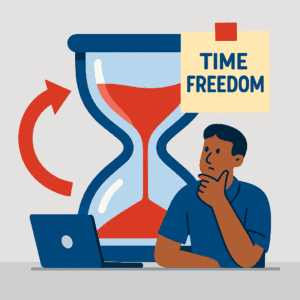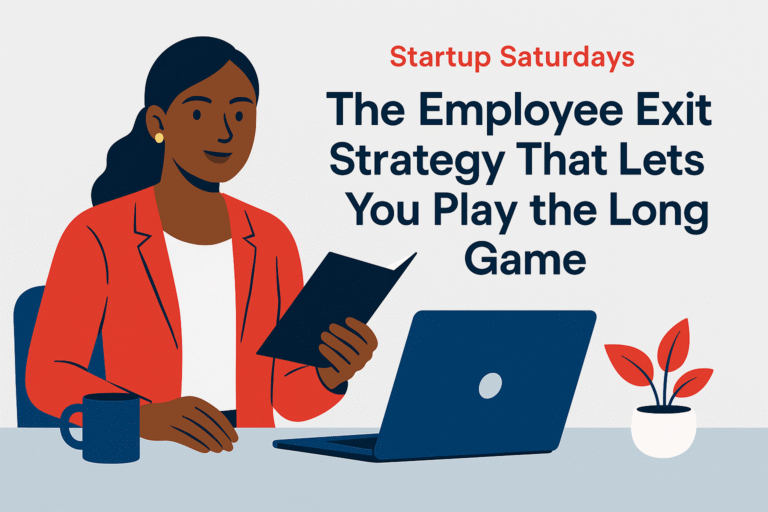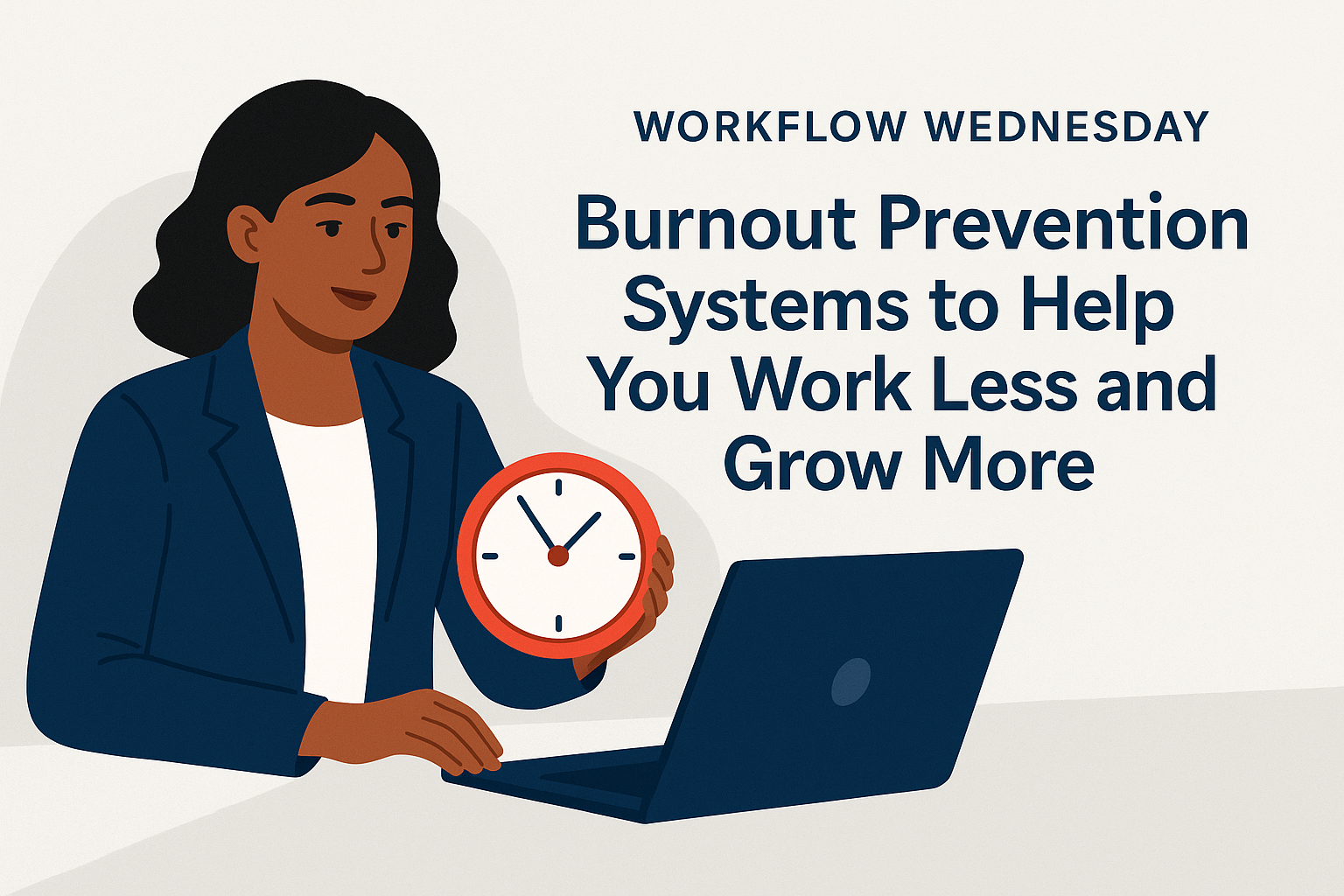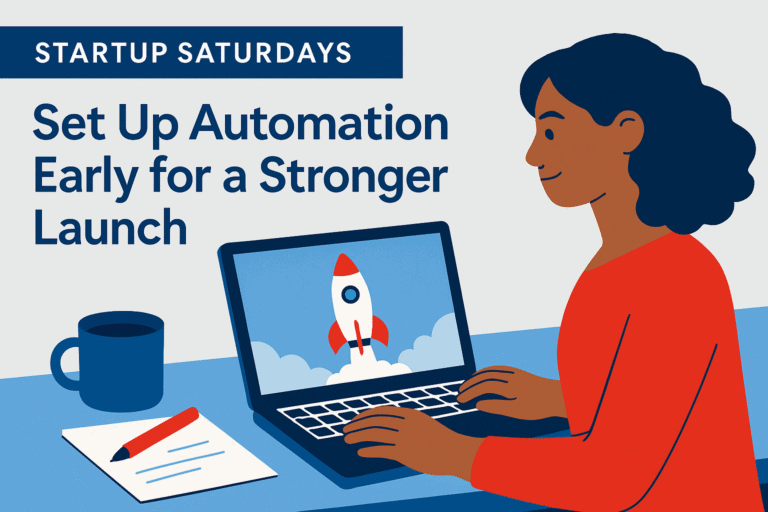CEO Mindset Monday
A time value mindset begins with one unshakable fact: you can earn back money, rebuild reputation, and even restore your energy, but you can never reclaim lost time. That makes time the most non-renewable asset you’ll ever have.
It sounds obvious, but most of us live like time is infinite—putting off dreams, waiting for “someday,” assuming we’ll get another shot. But every day that slips by is one you can’t get back.
For decades, I thought teaching in the public school system was something I’d love. I finally tried it — and hated it. The environment drained me, yet I stayed almost four years out of financial need. Two years in, I began implementing my exit plan. I couldn’t rewind the clock or undo the choice, but I could set myself up for a better future.
That’s the heart of the time value mindset. Even when you’ve “spent” time in ways you wish you hadn’t, you still have the power to redirect what’s left. The danger isn’t in making imperfect choices; it’s in refusing to act until it’s too late or adopting the mindset that you can’t open up new opportunities for yourself.
Opportunity Cost in Action

With a time value mindset, every yes equals a no. Say yes to tinkering endlessly with your logo, and you’ve said no to testing your offer with real people. Say yes to hours of scrolling “research,” and you’ve said no to building assets that actually compound.
When I first launched Backbone America in 2016, I poured time into chamber meetings and networking mixers. I told myself I was “building connections.” In reality, I was saying no to building systems that would reach the people who needed my work. It wasn’t that the effort was worthless—it just wasn’t the highest and best use of my limited hours.
Ask yourself: what’s the tradeoff? Is this activity worth the opportunity cost? A time value mindset demands you put those choices under a microscope.
Compound Returns on Time
If you’ve ever studied finance, you know compound interest is the eighth wonder of the world. Time has a similar effect in business.
The sooner you start investing in assets—content, processes, relationships—the more they’ll pay off. A single blog post or video created today can generate leads for years. A workflow built once can save you hours every week. A system you implement this month can become the backbone of your freedom five years from now.
I leaned on this when I returned to Backbone America with new skills. Instead of scattering energy, I created systems: automations, templates, and workflows that would serve me again and again. The hours I invested once have continued to save me countless hours since.
I also started repurposing what I created. A blog post might become part of a workshop. A workshop outline could be reshaped into a workbook. An email sequence might spark content for social media. By building once and reusing strategically, I multiplied the return on my time. That’s the time value mindset in practice—treating every effort as an asset that can keep working for you long after the initial investment.
The time value mindset says: don’t just spend time, invest it in ways that multiply.
Time Freedom ≠ Time Off

It’s the ability to decide when, where, and how you spend your time—without being chained to obligations that drain you. That might look like scaling back to 10 focused hours a week, working from another country for a month, or having the flexibility to take a mid-day walk without guilt.
I realized this while working as a Business Process Automation Engineer. On paper, my schedule was great—hybrid, steady pay, solid benefits. I worked from home most days, had a four-day workweek, and every weekend stretched into three days. Flexibility, yes—but not true freedom.
I was still required to stay local. One day a week in the office was mandatory, and it wasn’t a day of my choosing. On top of that, I had to come in once a month for the department meeting—just to show my face. And while my work could easily be done remotely (in fact, video calls with recording and transcription often made it more effective), policies and “the way we do it” kept me in a box.
That’s when the distinction became crystal clear: flexibility is not the same as freedom. A time value mindset pushes you to see that even a comfortable setup can still cost you the very thing you value most—ownership of your time.
That’s why having a time value mindset matters. It’s not about “more time off.” It’s about reclaiming ownership over your hours.
Scarcity as an Advantage
Here’s the twist: limited time can actually be your superpower.
When you only have 5–10 hours a week outside of your day job, you’re forced to make sharper decisions. Scarcity forces focus. Instead of endless tinkering, you zero in on actions that truly move the needle.
That’s how I rebuilt Backbone America. I didn’t have 40 extra hours a week to pour in. But I had clarity: automate where possible, focus on teaching and systems, and let everything else go. A time value mindset doesn’t see scarcity as a setback—it treats it as a filter for excellence. With less time to waste, you become ruthless about prioritization.
Quick story
I saw the same principle play out recently with my son. He moved to Montana for university and was under pressure to find a job to cover his share of expenses. The search wasn’t easy, and after rejection after rejection, his stress started to climb. He was slipping into the mindset of “I’ll take anything at this point,” and I could see the toll it was taking on his confidence.
I asked him what he thought would happen if he didn’t get a job. He admitted he feared losing the chance to stay in school. I reassured him that his school finances were secure—I had him covered—but he’d still need to pay me back for his portion once he found work. It wasn’t a free pass. What changed, though, was his stress level. He admitted he felt relief, even though he teased me for “changing the rules.” Then he surprised me by saying that, as hard as the pressure was, it had also pushed him forward.
That’s psychology.
Stress can be a driver. I often say people rarely make changes until it’s too painful not to. Scarcity works the same way. Just like my son’s urgency to find work, the scarcity of time in business forces you to act differently than you would if you had endless hours. It strips away the fluff and channels your focus toward what matters most.
The Cost of Waiting
Waiting for “the right time” is the biggest hidden drain on freedom.

Think about it: the months will pass either way. You can use them to build assets and momentum—or you can spend them standing still. The cost of waiting is invisible until years have slipped by and you realize how much ground you could have covered.
I’m not one to dwell on regrets. My philosophy has always been that even if I made a different choice in the past, there’s no guarantee it would have led to something better. My life is what it is, and I am who I am because of the path I’ve walked. No regrets.
But inaction in the present? That’s a different story. When I catch myself sitting stagnant, I have to ask: why am I letting opportunities pass me by? The future isn’t going to shape itself into something better unless I step in and make changes. I have to grasp the opportunities in front of me—or even create new ones.
That’s what the time value mindset is about: realizing that inaction today is the most expensive choice you’ll ever make. Anything is possible if you reach. But if you never try, you’ll never get.
Turning Today into Tomorrow’s Leverage
Every action you take today is either buying back time for your future self—or stealing it.
Automating a task today saves hours every month going forward.
Documenting a process today frees you to delegate it tomorrow.
Creating content today means your message works for you even while you sleep.
The time value mindset is about leverage. It asks: will this hour keep costing me, or will it keep paying me?
When I invested in building Backbone America’s automation systems, it wasn’t instant payoff. But now, those same systems give me leverage. They free my time, scale my reach, and let me focus on strategy rather than repetitive work.
Here’s the encouragement I want to leave you with: you don’t need a wide-open calendar to start building freedom. You just need consistency with the blocks of time you do have.

If you can dedicate even two focused hours a day, or 8–10 hours a week, you can build something real. That’s how freedom is built—not in giant leaps, but in small, repeated steps that compound over time.
The time value mindset turns those blocks into assets. It shifts your perspective from “I only have a little time” to “this little time, multiplied, creates freedom.”
Choose to Spend Time as a CEO
Money can be replenished. Time cannot. That’s why a time value mindset is the CEO’s greatest tool. It keeps you honest about opportunity cost, focused on compounding assets, and intentional about the future you’re building.
Don’t wait for perfect timing. Don’t confuse busyness with progress. And don’t let the months slip by without a return.
Your time is your most valuable asset. Use it like the CEO of your future.
Want strategies delivered straight to your inbox that help you protect your time and build freedom faster? Join my mailing list and get tools designed to help you move from employed to empowered—without wasting a minute.





